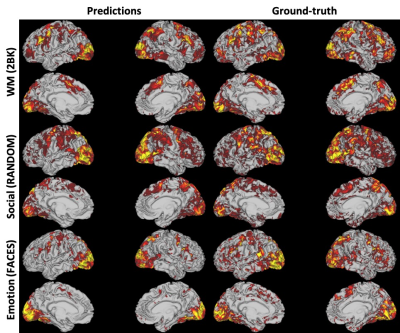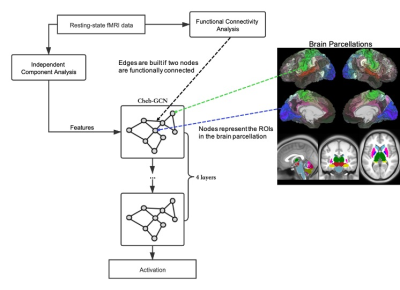Zhangxuan Hu1,2, Hua Guo2, Lihong Wang3, Bing Wu1, and Xue Zhang4
1GE Healthcare, MR Research China, Beijing, China, 2Center for Biomedical Imaging Research, Department of Biomedical Engineering, School of Medicine, Tsinghua University, Beijing, China, 3Department of Psychiatry, University of Connecticut School of Medicine, Farmington, MI, United States, 4Department of Psychiatry and Behavioral Sciences, Stanford University, Stanford, CA, United States
1GE Healthcare, MR Research China, Beijing, China, 2Center for Biomedical Imaging Research, Department of Biomedical Engineering, School of Medicine, Tsinghua University, Beijing, China, 3Department of Psychiatry, University of Connecticut School of Medicine, Farmington, MI, United States, 4Department of Psychiatry and Behavioral Sciences, Stanford University, Stanford, CA, United States
Resting-state activity could predict task-evoked activation patterns under different behavioral domains using a graph convolutional network.

Fig. 2 Predicted and actual activation maps of 3 representative subjects in the WM (2BK), social (RANDOM), emotion (FACES) behavioral domains.

Fig. 1 Modeling pipeline. Group independent component analysis was implemented to parcellate data of all subjects into 50 shared brain networks, individuals’ connectivity maps for each network were derived following the dual regression procedure and were entered as features of the GCN. A customized brain parcellation of 399 ROIs were applied as graph nodes, individual FC matrix of those ROIs was calculated as the edges. Four Chebyshev spectral graph convolutional layers were used, instance normalization was added for each of the first three layers to reduce over-fitting.